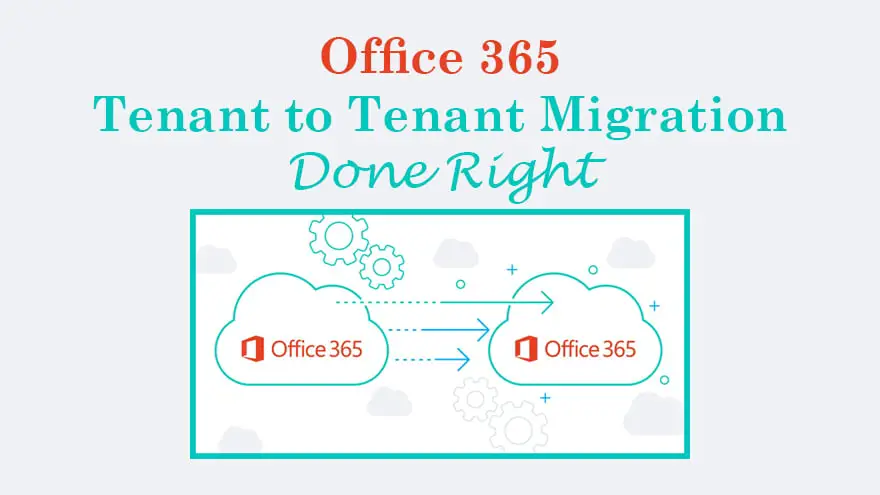When we first started adopting Office 365, the major concern was over our tenants being on a shared service. To ensure security, Office 365 and other cloud technology providers placed controls that keep tenants separate.
However, those same controls cause challenges at the time of mergers, acquisitions, or divestiture.
Today, I’ll give you an overview of how to do o365 tenant to tenant migration the right way. For a more in-depth tutorial, you can also check out the o365 migration guide.
Generally, there are three phases of any tenant to tenant migration. These are mentioned below:
- Pre-Migration Steps
- Migration Day Activities
- Post-Migration Steps
Let’s talk about each phase in a bit more detail.
1- Pre-Migration Steps
In this phase, you have to plan and set up everything ahead of the actual migration process. Usually, it’s better to finalize the planning at least 1 or 2 weeks before the migration to avoid any disruptions.
- At first, you must ensure that your office 365 tenant to tenant migration tool is ready. In most cases, you’ve to purchase its license.
- Prepare the target tenant by creating extra room to accommodate mailboxes from the source tenant. You can either use Microsoft 365 admin center or Azure Active Directory consolidation.
- Inform end-users about the impending o365 tenant to tenant migration process.
- It’s time to perform the DNS verification. To do so, add the source tenant to the target tenant’s o365 admin center and create the TXT records.
- Migration tools usually require a CSV file containing all the email addresses that need to be migrated. So, you must generate one ahead of the scheduled date.
- Update Mail Exchanger (MX) records to avoid disruption in the mail flow.
- The last step is to disable the Azure Active Directory syncing. It can take up to one complete day, so plan it carefully.
2- Migration Day Activities
As we’ve planned most of the migration process early on, so there’s not much to worry about now. On the migration day, you only need to perform four activities.
- It’s very important to stop any incoming emails from reaching the source tenant during the migration. It helps prevent any errors. You can even use a third-party service to queue incoming emails and receive them after the migration process ends.
- In order to successfully perform the migration, it is required to remove the source tenant domain from Office 365. Some processes will even prevent you from doing that. So, you’ve to manually stop them using the PowerShell command.
- Let’s say you’ve added the source tenant domain to the target domain, now it’s time to verify it. You can do that from the admin center of the target domain.
- There are different ways to migrate office 365 to office 365. You must select the one depending on your Exchange Server and the number of o365 tenants. The most common methods are:
- Staged migration
- Cutover migration
- Hybrid migration
3- Post-Migration Steps
Finally, clear the Outlook Auto-Complete List. It is because Outlook caches the email addresses of receivers. So, after migration, the replies may not be delivered successfully.
Conclusion
There are indeed many office 365 migration challenges. It even gets more complex for heavily customized workflows. But still, there are some tools available that take the worry away by automating the tenant to tenant migration office 365.
So, don’t worry about how to do migration, instead go ahead with mergers or acquisitions.
